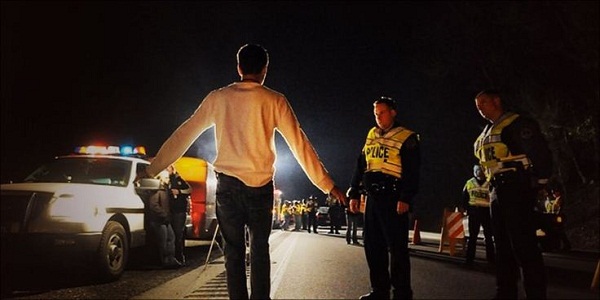
Republic Act 10586, also known as the Anti-Drunk and Drugged Driving Act, was signed by the former President Benigno Aquino III on 27th of May, in 2013.
It is an act enforced due to the increasing number of road accidents linked to drivers who are under the influence of liquor, unsafe drugs, and similar elements. The main aim of this act is to limit vehicular accidents by promoting the standards of safe driving, prohibiting alcohol consumption and drug use especially when driving, and penalizing those who are caught violating.
All applicants for a driver’s license in the Philippines, professional or renewal, are required to acquire a Theoretical Driving Course Certificate, as proof of completion of a Theoretical Driving Course. The course provides information on safe driving – including the effects of alcohol, dangerous drugs, and/or other similar substances, that might have an effect on the ability of a driver to operate a motor vehicle.
What does this law forbid?
- Driving under the influence of alcohol
Alcohol, such as beer and wine, which causes intoxication when consumed.
- Driving under the influence of unsafe drugs
Unsafe drugs include cannabis, cocaine, ecstasy, heroin, shabu, and ingredients on some prescription drugs like diazepam.
Probable Causes

Surprise Drug Tests are sometimes conducted by LTO to transport drivers to assure the safety and security of commuters.
In other circumstances, an officer should have a reason or a probable cause to think that a driver is intoxicated or is under the influence of drugs.
- Causes might be
- over-speeding,
- swerving,
- lane straddling,
- sudden stops, and
- weaving.
Standardized Field Sobriety Test or SFTS
Once suspected, an officer will politely ask a driver to stop and will be subjected to standardized sobriety tests.
Test 1: The Eye Test or Horizontal Gaze Nystagmus
What does it test:
Unwanted jerkiness of the eyes or irregularity in the eye movement.
How it is done:
The apprehending officer will stand about a foot away from the driver, and the driver will be instructed to follow an object with his/her eyes.


Test 2: The Walk-and-Turn
What does it test:
The ability of the driver to maintain balance and follow directions.
How it is done:
The driver will be asked to walk a straight line by doing a nine (9) steps heel-to-toe walk, turn, and walk back to the initial point.
Test 3: The One-Leg Stand
What does it test:
The driver’s coordination and balance
How it is done:
The driver is required to stand only with one leg, both arms on his side, for thirty (30) seconds. One foot should be flat on the floor, while the other foot is raised about six inches above the ground.

Breath Analyzer

If a driver fails any of these sobriety tests, it will then be mandatory for the enforcer to determine the driver’s blood alcohol concentration level which can be obtained by using a breath analyzer or similar measuring instrument.
Blood alcohol concentration level. Non-professional drivers with a blood alcohol content of over 0.05 % will be penalized, and for professional drivers and motorcycle riders, 0.01%.
How it is done:
The driver only needs to blow in the breath analyzer. A disposable mouthpiece is provided for hygiene purposes, making sure that it is a new one to avoid any error in the result.
The test results will be printed into three copies by the breath analyzer. for the driver, the apprehending officer, and the last copy for the Land Transportation Office.
A Gas Chromatography-Mass Spectroscopy (GCMS) may be used if a breath analyzer is not available.
Drug Confirmatory Test
Republic Act No. 9165 mandates the facilitating law enforcement officials to bring the driver to the nearest police station and subject said driver to a drug screening test.
Penalties
If the violation did not result in physical injuries or homicide
Penalty – Imprisonment for 3 months
Fine – Twenty thousand pesos (Php20,000.00) to Eighty thousand pesos (Php80,000.00)
License –
1st conviction – nonprofessional driver’s license will be confiscated and suspended for 12 months. It shall only be released by LTO after a lawful order from the court. A professional driver will have the same charges and his/her license will be permanently revoked.
2nd conviction – Perpetually revoked license.
If the violation resulted in physical injuries
Penalty – The penalty provided in Article 263 of the Revised Penal Code, or paying the fine, whichever is higher
Fine – One hundred thousand pesos (Php100,000.00) to Two hundred thousand pesos (Php200,000.00)
If the violation resulted in homicide
Penalty – The penalty provided in Article 249 of the Revised Penal Code, and
Fine – Three hundred thousand pesos (Php300,000.00) to Five hundred thousand pesos (Php500,000.00)
IMPORTANT REMINDERS
- Refusal to take Sobriety and Mandatory tests – a driver who refuses to undergo sobriety and mandatory drug tests shall be penalized with the confiscation and automatic revocation of his or her driver’s license
- Section 7 of the said law mandates all drivers involved in vehicular accidents shall undergo chemical and alcohol testing even if he or she appears to be completely sober.
There are just so many things to learn and keep in mind to be a responsible driver in the Philippines. A Theoretical Driving Course provides information on safe driving – including the effects of alcohol, dangerous drugs, and/or other similar substances, that might have an effect on the ability of a driver to operate a motor vehicle.
Drivesafe PH provides a theoretical driving course that helps you understand the basics of driving and what to avoid to maintain road safety for everybody. Drivesafe PH is the 1st LTO Accredited Online Theoretical Driving Course Provider, a social learning platform that provides accessibility to Defensive Driving Education to future Filipino drivers who would like to take the first step in Road Safety.


